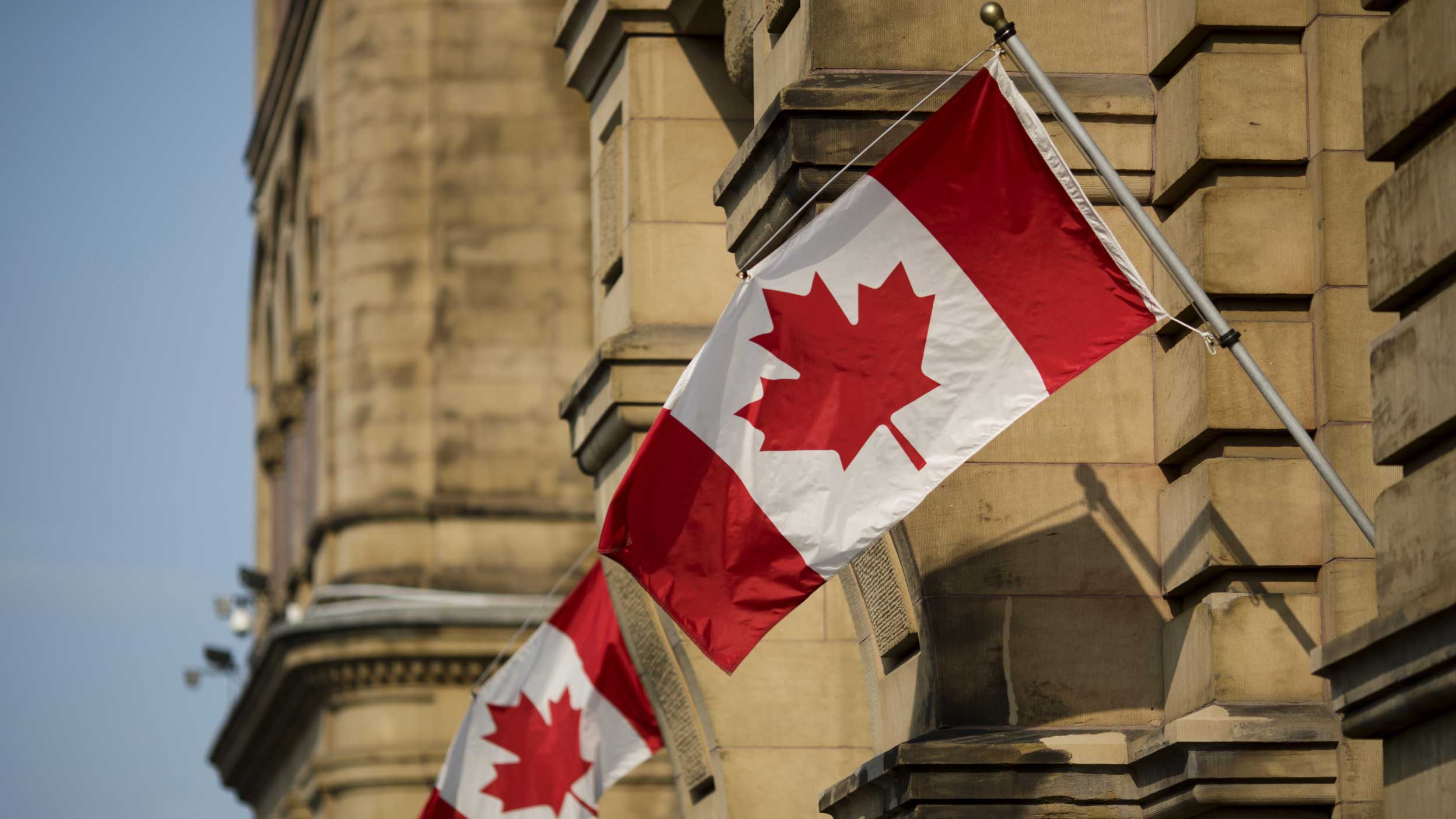
Monthly Market Roundup
In our monthly market roundup for January, Invesco experts provide an overview of a strong month for global equities and offer an update on the fixed income markets.

Canadian Prime Minister Justin Trudeau announced his resignation following a budget-related fallout with the finance minister.
I expect stocks to have a positive year, but I believe we may see better returns from mid- and small-cap stocks as well as stocks outside the US.
I expect policymakers, including central banks, to continue to proactively support their respective economies in 2025.
2024 was a year of geopolitical instability, and 2025 is already starting off with a bang as Canadian Prime Minister Justin Trudeau announced his resignation in the first week of the new year. 2024 was also a year of better-than-expected stock market performance, and I expect 2025 to be another positive year with performance broadening from what we saw last year. Where else might the trends from 2024 extend into 2025? Follow along to find out.
The global economy. The global economy was more resilient than most expected, especially the US economy. The International Monetary Fund estimates that once the final data is tallied, global gross domestic product growth for 2024 will be 3.2%.1
Global stock performance. Also in the better-than-expected category: Stock market performance, especially in the US and China. The MSCI World Index rose 18% for the year, the MSCI China Index gained 19.7%, and the MSCI US Index rose 25.1%.2
Monetary and fiscal policy. Policymakers, especially central banks, proactively supported economies and markets. This was a far cry from the more laissez faire attitude of previous generations of policymakers but helped avoid greater problems.
Changing expectations for Fed policy. We saw significant changes in expectations around Fed policy over the course of the year, especially after President-elect Donald Trump began surging in the polls and economic data surprised to the upside. This caused market volatility, especially in the bond market.
Geopolitical instability. There were many major elections in 2024 — from India to Mexico to the United Kingdom to the United States — and some surprise outcomes as voters showed a clear distaste for incumbents. But perhaps more importantly, there was a significant rise in political instability from Germany to France to Japan to Korea last year, with much of it related to budget woes. The French government collapsed, the German government collapsed, and the leader of South Korea was impeached. French political instability and budgetary disagreements resulted in higher borrowing costs as investors worried about rising deficits and higher debt-to-GDP levels. This resulted in French bond yields rising above Greek bond yields.4 In South Korea, consumer confidence experienced the largest drop since the start of the pandemic.5
So what does 2025 have in store for us? Probably more of the same.
Geopolitical instability. The year is starting with a bang. I always expected more geopolitical instability and uncertainty but not necessarily this quickly. Canadian Prime Minister Justin Trudeau announced his resignation on Jan. 6 following a fallout with Finance Minister Chrystia Freeland that involved the budget. As I mentioned in my last blog back in December, budgets will be an important theme going forward – look for them to precipitate more political turmoil.
The global economy. I also expect global GDP growth to re-accelerate in 2025, helped by both the US and Chinese economies. We’re seeing consumer confidence rise in the US as well as improvement in the China Services Purchasing Managers’ Index.6
Global stock performance. I also expect stocks to have another positive year, although I believe we’re likely to see better returns from mid- and small-cap stocks as well as stocks outside the United States.
Monetary and fiscal policy. I believe expectations around Fed policy will continue to change going forward, especially since there is a small but not miniscule risk that inflation may re-accelerate — and the Fed may even need to actually hike rates in 2025. Finally, and perhaps most importantly, I expect policymakers to continue to proactively support their respective economies and work to counter whatever headwinds may appear in 2025.
In short, in 2025 the key question remains whether central banks can steer the world’s major economies toward moderate growth while keeping inflation in check. I think it will be able to, which is why I favor risk assets in this environment. However, I note the need to keep risks tightly controlled and not overlook valuations, as higher valuations limit the upside for risk assets. I also anticipate volatility in the near term as markets react to geopolitical uncertainties, including the potential for tariffs, as well as shifts in the rates outlook. I also would expect to see market jitters in reaction to any weak economic data, especially labor data.
Given greater investor uncertainty as we enter the new year, I think it’s important to reiterate our outlook for 2025. Below are a few highlights – you can read the full outlook here.
Stocks. I favor cyclical and small-cap equities given relatively attractive valuations and greater sensitivity to the economic cycle. I also prefer developed ex-US and emerging markets equities for those same reasons. As central banks cut rates, I anticipate that valuations should also see support from lower discount rates.
Fixed income. With bond yields still at relatively high levels, I believe bonds also offer attractive opportunities despite tight spreads, especially for longer holding periods. In my view, strong fundamentals underpin many fixed income assets, helping to explain very tight credit spreads in both investment grade and high yield credit. I favor some credit risk to take advantage of this resilient and improving growth backdrop. I also like the diversification properties of bank loans, which tend to have similar volatility to investment grade credit and also offer a high current yield. Given the near-zero duration of bank loans, I expect them to be relatively immune to interest rate volatility compared to other fixed income asset classes. I also continue to anticipate good performance from emerging markets bonds.
Real estate. I remain positive on real estate and believe there is more upside potential as the environment improves. For example, cuts in policy rates provide scope for reductions in real estate debt costs and capitalization rates, which I believe could lead to renewed transaction activity and progress toward price recovery.
Diversification. I continue to believe in the importance of broad diversification for the long run and anticipate a general broadening of markets as economies and monetary policies normalize.
Let me finish by sharing my New Year’s resolutions for 2025. No matter what surprises may be in store over the next 12 months, I believe these resolutions can help you stay focused on your long-term financial goals while being open to short-term opportunities:
As we begin 2025, I’ll continue to look for any signs of larger cracks in the global economy — especially in economies where there has been significant tightening — or resurgences in inflation that could alter our base case scenario and our favored asset classes. I’m not just looking for confirmation, but also for data that contradicts my thesis. In the immediate term, I’ll be particularly focused on both the US Job Openings and Labor Turnover Survey (JOLTS) and the US Employment Situation Report given obvious Fed concerns about the labor market.
I’m happy to be on this journey with you. Happy New Year!
Jan. 6 |
Eurozone Services Purchasing Managers’ Index |
Indicates the economic health of the services sector. |
|---|---|---|
|
UK Services Purchasing Managers’ Index |
Indicates the economic health of the services sector. |
|
Eurozone Sentix Investor Confidence |
Tracks sentiment among eurozone investors. |
|
US Services Purchasing Managers’ Index |
Indicates the economic health of the services sector. |
Jan. 7 |
Eurozone Consumer Price Index |
Tracks the path of inflation. |
|
US JOLTS Job Openings Report |
Gathers data related to job openings, hires, and separations. |
Jan. 8 |
Germany Factory Orders |
Indicates the health of the manufacturing sector. |
|
Germany Retail Sales |
Indicates the health of the retail sector. |
|
Eurozone Producer Price Index |
Measures the change in prices paid to producers of goods and services |
|
Eurozone Consumer Inflation Expectations |
Assesses eurozone consumers’ expectations for the path of inflation. |
|
Eurozone Consumer Confidence |
Tracks sentiment among eurozone consumers. |
|
Federal Open Market Committee Meeting Minutes |
Gives further insight into the central bank’s decision-making process. |
|
US Consumer Credit |
Tracks the volume of credit borrowed by US consumers. |
|
China Consumer Price Index |
Tracks the path of inflation. |
Jan. 9 |
European Central Bank Economic Bulletin |
Presents the economic and monetary information that forms the basis for the Governing Council's policy decisions. |
|
Eurozone Retail Sales |
Indicates the health of the retail sector. |
|
Japan Household Spending |
Tracks the health of the consumer. |
Jan. 10 |
China New Loans |
Measures the change in the total value of outstanding bank loans issued to consumers and businesses. |
|
US Employment Situation Report |
Indicates the health of the job market. |
|
Canada Jobs Report
|
Indicates the health of the job market. |
|
University of Michigan Consumer Inflation Expectations
|
Assesses US consumers’ expectations for the path of inflation. |
|
University of Michigan Consumer Sentiment |
Tracks sentiment among US consumers. |

In our monthly market roundup for January, Invesco experts provide an overview of a strong month for global equities and offer an update on the fixed income markets.

Recent history has shown that protectionist measures such as tariffs can hinder economic growth in the near term but don't necessarily create a long-term hurdle for markets.

Our experts address the critical questions that arose following the news of DeepSeek’s artificial intelligence model and the market’s volatile reaction. Find out more.


Sign up to receive the latest insights from Invesco’s global team of experts and details about on demand and upcoming online events.
1 Source: International Monetary Fund, as of Oct. 22, 2024
2 Source: LSEG Datastream and MSCI, as of Dec. 31, 2024
3 Source: Korea.net, “'Unlimited liquidity' pledged to restore financial, FX markets,” Dec. 4, 2024
4 Source: Bloomberg, as of Dec. 31, 2024
5 Source: Bank of Korea, Dec. 23, 2024
6 Source: National Bureau of Statistics, as of Jan. 2, 2025
The value of investments and any income will fluctuate (this may partly be the result of exchange rate fluctuations) and investors may not get back the full amount invested.
The opinions referenced above are those of the author as of 6 January , 2025.
This document is marketing material and is not intended as a recommendation to invest in any particular asset class, security or strategy. Regulatory requirements that require impartiality of investment/investment strategy recommendations are therefore not applicable nor are any prohibitions to trade before publication. The information provided is for illustrative purposes only, it should not be relied upon as recommendations to buy or sell securities.
Where individuals or the business have expressed opinions, they are based on current market conditions, they may differ from those of other investment professionals, they are subject to change without notice and are not to be construed as investment advice.
In general, stock values fluctuate, sometimes widely, in response to activities specific to the company as well as general market, economic and political conditions.
The risks of investing in securities of foreign issuers, including emerging market issuers, can include fluctuations in foreign currencies, political and economic instability, and foreign taxation issues.
Investments in companies located or operating in Greater China are subject to the following risks: nationalization, expropriation, or confiscation of property, difficulty in obtaining and/or enforcing judgments, alteration or discontinuation of economic reforms, military conflicts, and China’s dependency on the economies of other Asian countries, many of which are developing countries.
Stocks of small- and mid-sized companies tend to be more vulnerable to adverse developments, may be more volatile, and may be illiquid or restricted as to resale.
Fixed income investments are subject to credit risk of the issuer and the effects of changing interest rates. Interest rate risk refers to the risk that bond prices generally fall as interest rates rise and vice versa. An issuer may be unable to meet interest and/or principal payments, thereby causing its instruments to decrease in value and lowering the issuer’s credit rating.
High yield bonds, or junk bonds, involve a greater risk of default or price changes due to changes in the issuer’s credit quality. The values of junk bonds fluctuate more than those of high quality bonds and can decline significantly over short time periods.
Investments in real estate-related instruments may be affected by economic, legal, or environmental factors that affect property values, rents or occupancies of real estate. Real estate companies, including REITs or similar structures, tend to be small and mid-cap companies and their shares may be more volatile and less liquid.
A basis point is one-hundredth of a percentage point.
The capitalization rate (or cap rate) indicates the rate of return that is expected to be generated on a real estate investment property.
Credit risk is the risk of default on a debt that may arise from a borrower or issuer of bonds failing to make required payments.
Credit spread is the difference in yield between bonds of similar maturity but with different credit quality.
A discount measures how much less one stock (or index) is trading compared with another stock (or index).
Duration is a measure of the sensitivity of the price (the value of principal) of a fixed income investment to a change in interest rates. Duration is expressed as a number of years.
Monetary easing refers to the lowering of interest rates and deposit ratios by central banks.
The Employment Situation Report is released by the US Bureau of Labor Statistics to monitor labor market data on a monthly basis.
Gross domestic product (GDP) is a broad indicator of a region’s economic activity, measuring the monetary value of all the finished goods and services produced in that region over a specified period of time.
Inflation is the rate at which the general price level for goods and services is increasing.
Interest rate volatility measures the extent to which interest rates change over time.
The International Monetary Fund is a global organization that supports economic policies that promote financial stability and monetary cooperation.
The Job Openings and Labor Turnover Survey (JOLTS) from the US Bureau of Labor Statistics produces data on job openings, hires, and separations.
The MSCI China Index captures large- and mid-cap representation across China H shares, B shares, Red chips, P chips, and foreign listings (e.g., ADRs).
The MSCI World Index is an unmanaged index considered representative of stocks of developed countries.
A policy rate is the rate used by central banks to implement or signal their monetary policy stance.
Purchasing Managers’ Indexes (PMI) are based on monthly surveys of companies worldwide and gauge business conditions within the manufacturing and services sectors.
A risk asset is generally described as any financial security or instrument that carries risk and is likely to fluctuate in price.
Spread represents the difference between two values or asset returns.
Tightening monetary policy includes actions by a central bank to curb inflation.
EMEA4135336